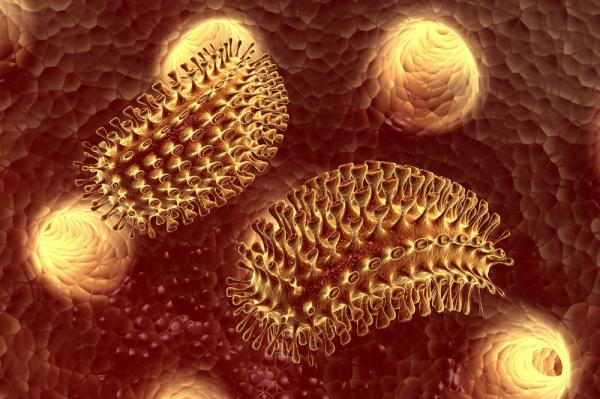
CAMBRIDGE, England, April 12 (UPI) — The first humans out of Africa likely brought disease with them that infected the populations of Neanderthals they encountered in Europe and Eurasia.
While studying ancient genetic fragments of viral diseases sourced from hominin fossils, researchers determined that some of the viruses were much older than previously thought.
Furthermore, scientists say they found evidence these viruses were passed to modern humans by other hominins in Africa. Previous research proves Homo sapiens and Neanderthals interbred in Europe, so scientists say it’s reasonable to assume these viruses were passed along.
Researchers hypothesize that the list of diseases passed from humans to Neanderthals during the first migration out of Africa included tapeworm, tuberculosis, stomach ulcers and herpes. These new diseases may have precipitated the hominin’s eventual extinction.
“Humans migrating out of Africa would have been a significant reservoir of tropical diseases,” Charlotte Houldcroft, a biological anthropologist at the University of Cambridge, said in a news release. “For the Neanderthal population of Eurasia, adapted to that geographical infectious disease environment, exposure to new pathogens carried out of Africa may have been catastrophic.”
Houldcroft is the lead author of a new paper on ancient viruses and their evolutionary paths out of Africa. The paper was published this week in the American Journal of Physical Anthropology.
Improving genetic analysis technologies have helped scientists gain greater insight into origins of viruses, both ancient and modern.
Previously, researchers have suggested the adoption of agriculture and more sedentary settlements led to an explosion of infectious disease. But increasingly, the genetic evidence points to a lengthier shared history between modern man and common viruses.
In fact, the newest analysis out of Cambridge suggests humans passed these viruses on to herding animals, not the other way around.
“We are beginning to see evidence that environmental bacteria were the likely ancestors of many pathogens that caused disease during the advent of agriculture, and that they initially passed from humans into their animals,” Houldcroft said.
The transmission of diseases from migrating humans to Eurasian Neanderthals would have happened slowly, as small groups interbred. Later, with the advent of agriculture, environmental conditions allowed for diseases to evolve and spread more efficiently.
“Hunter-gatherers lived in small foraging groups. Neanderthals lived in groups of between 15 and 30 members, for example,” Houldcroft explained. “So disease would have broken out sporadically, but have been unable to spread very far. Once agriculture came along, these diseases had the perfect conditions to explode, but they were already around.”






